Water Pollution in Queensland, Australia: Causes and Solutions
VerifiedAdded on 2023/06/04
|23
|1378
|186
Presentation
AI Summary
This presentation provides an overview of water pollution issues in the Queensland region of Australia. It begins by defining water pollution and highlighting the role of plastics, especially microplastics, in marine pollution. The presentation includes a review of articles discussing industrial pollution and the need for stakeholder involvement in improving water quality. A SWOT analysis identifies strengths such as economic development and weaknesses like the use of chemical fertilizers. Opportunities include stricter regulations and farmer training, while threats involve the accumulation of toxins in marine life. A PESTLE analysis examines political, economic, social, technological, environmental, and legal factors affecting water pollution. The DPSIR model is used to analyze driving forces like natural phenomena and urbanization, pressures such as nitrate and chemical pollution, the state of water quality, impacts on human health and groundwater reserves, and responses like awareness campaigns and wastewater treatment. The presentation concludes with recommendations for preventing groundwater contamination, reusing treated wastewater, finding substitutes for toxic pollutants, investing in advanced technologies, enhancing sewage systems, and promoting awareness and corporate social responsibility. Key references are also provided.
1 out of 23
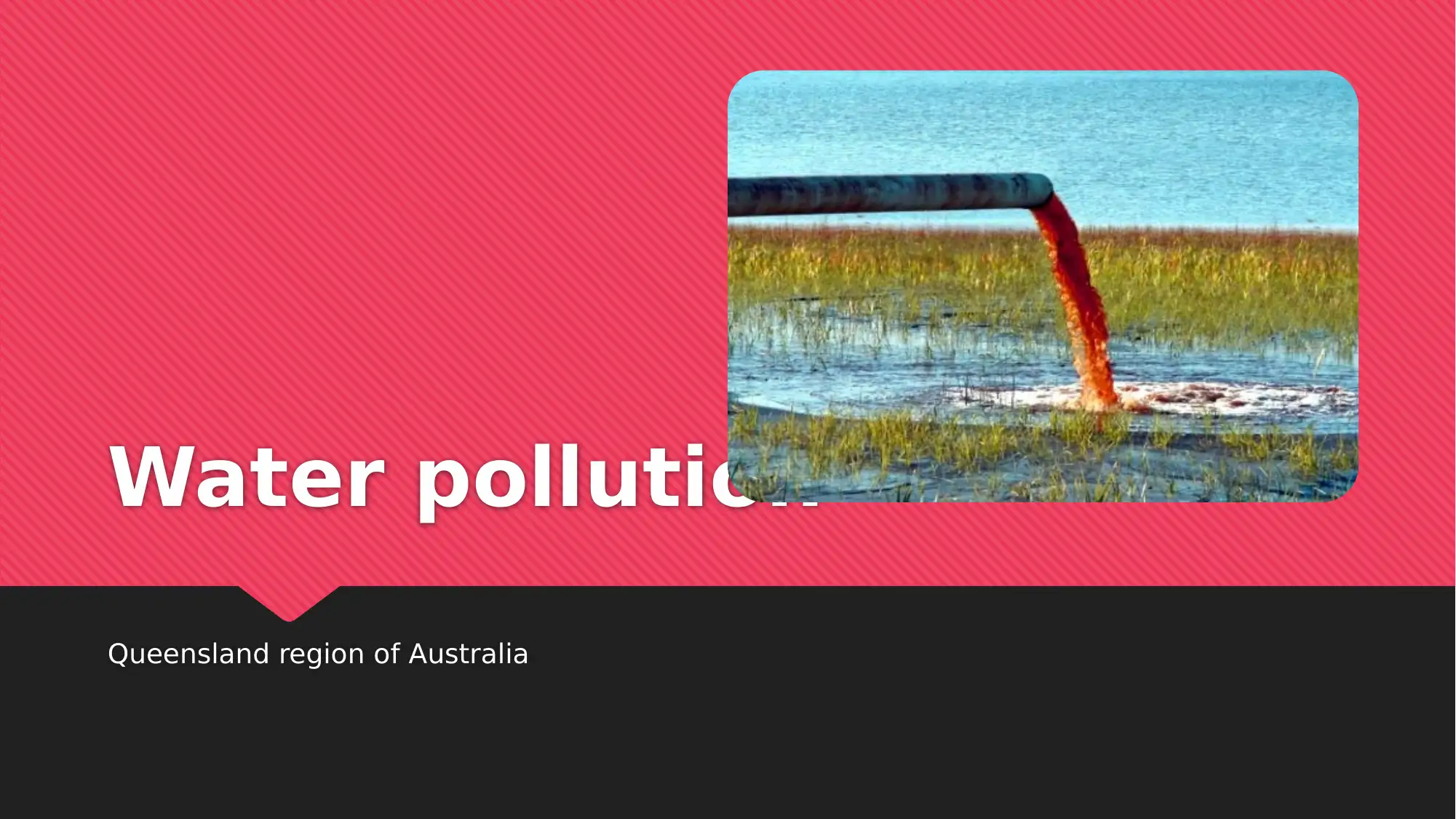
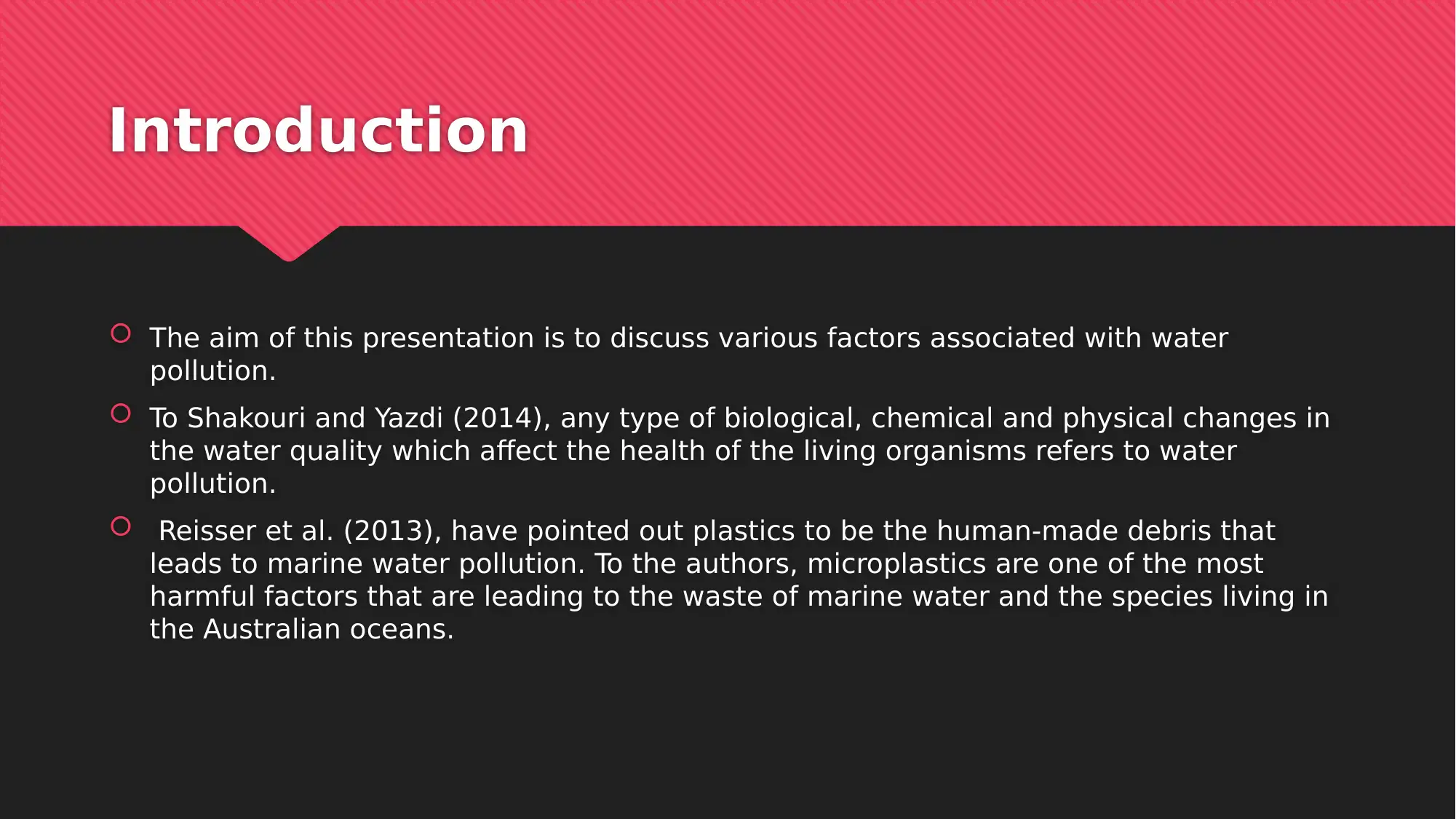
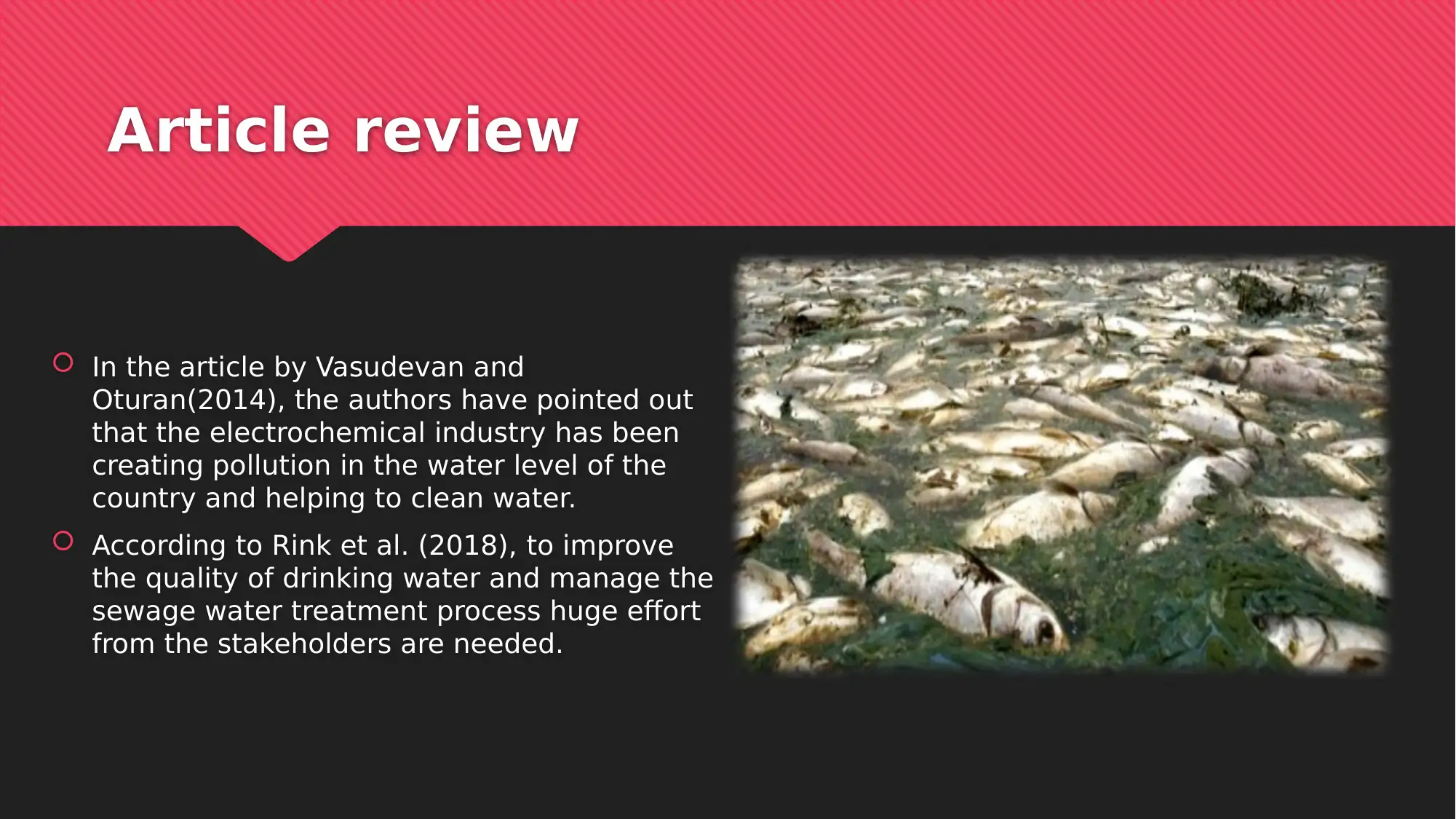

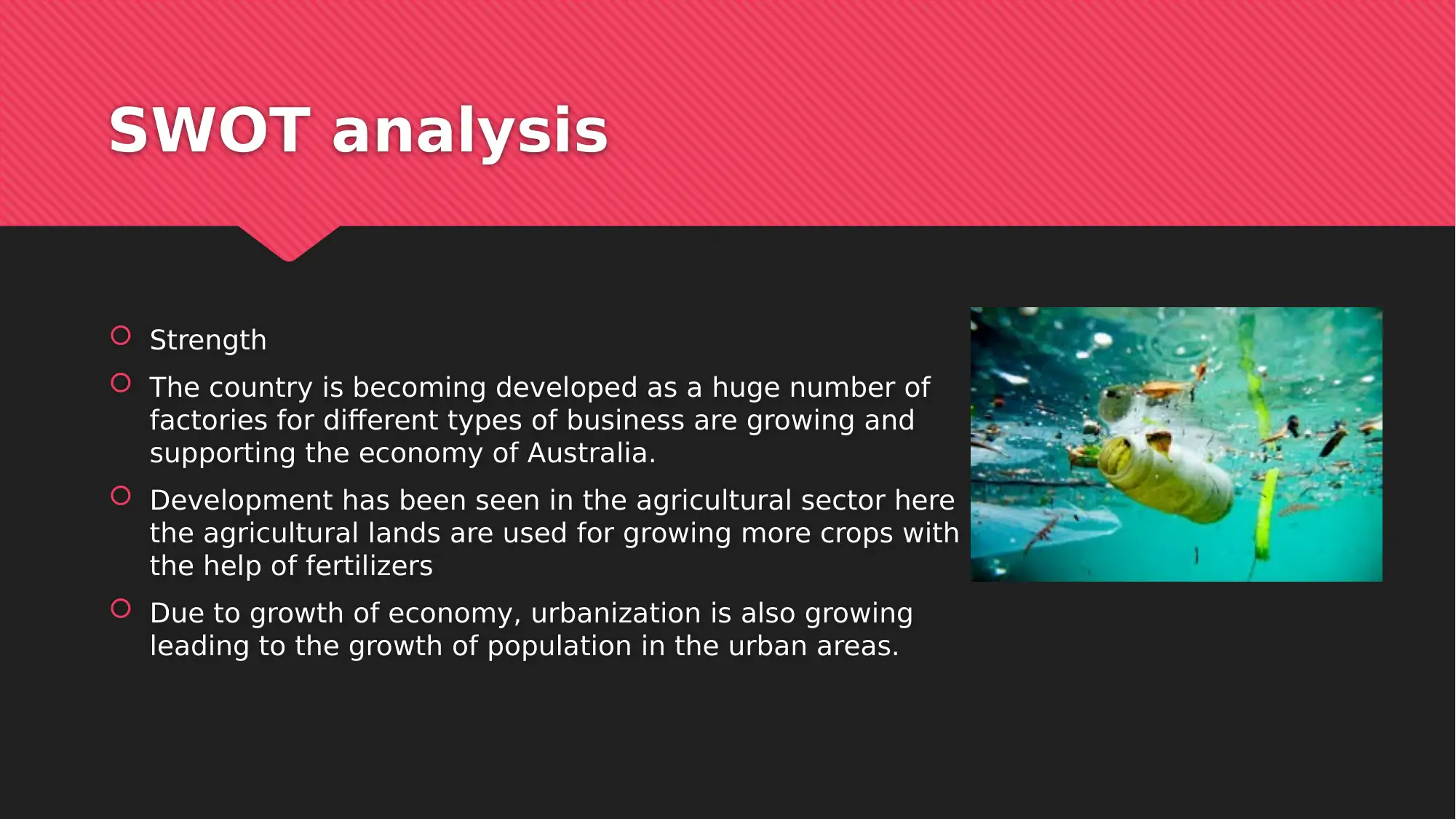

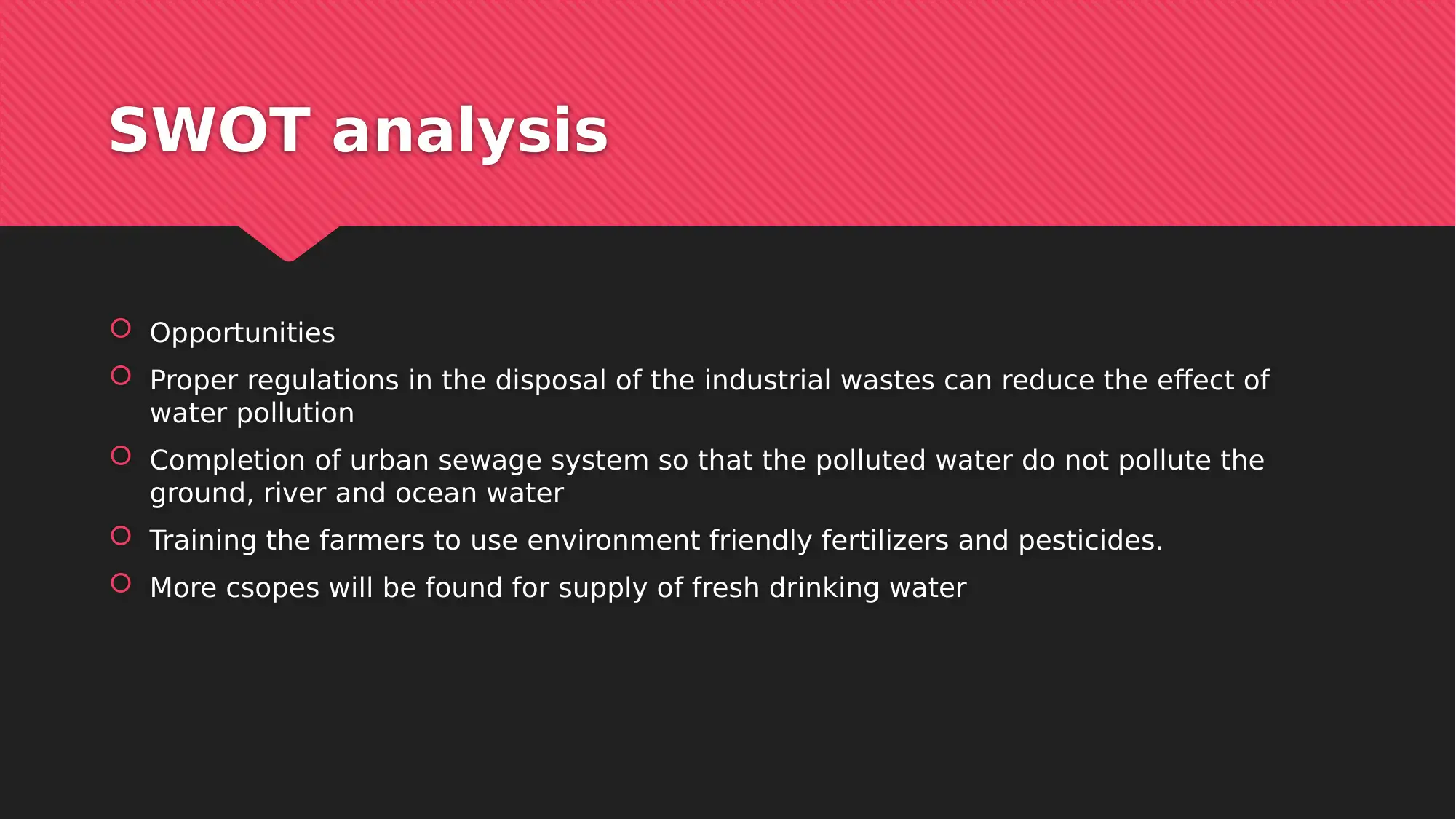

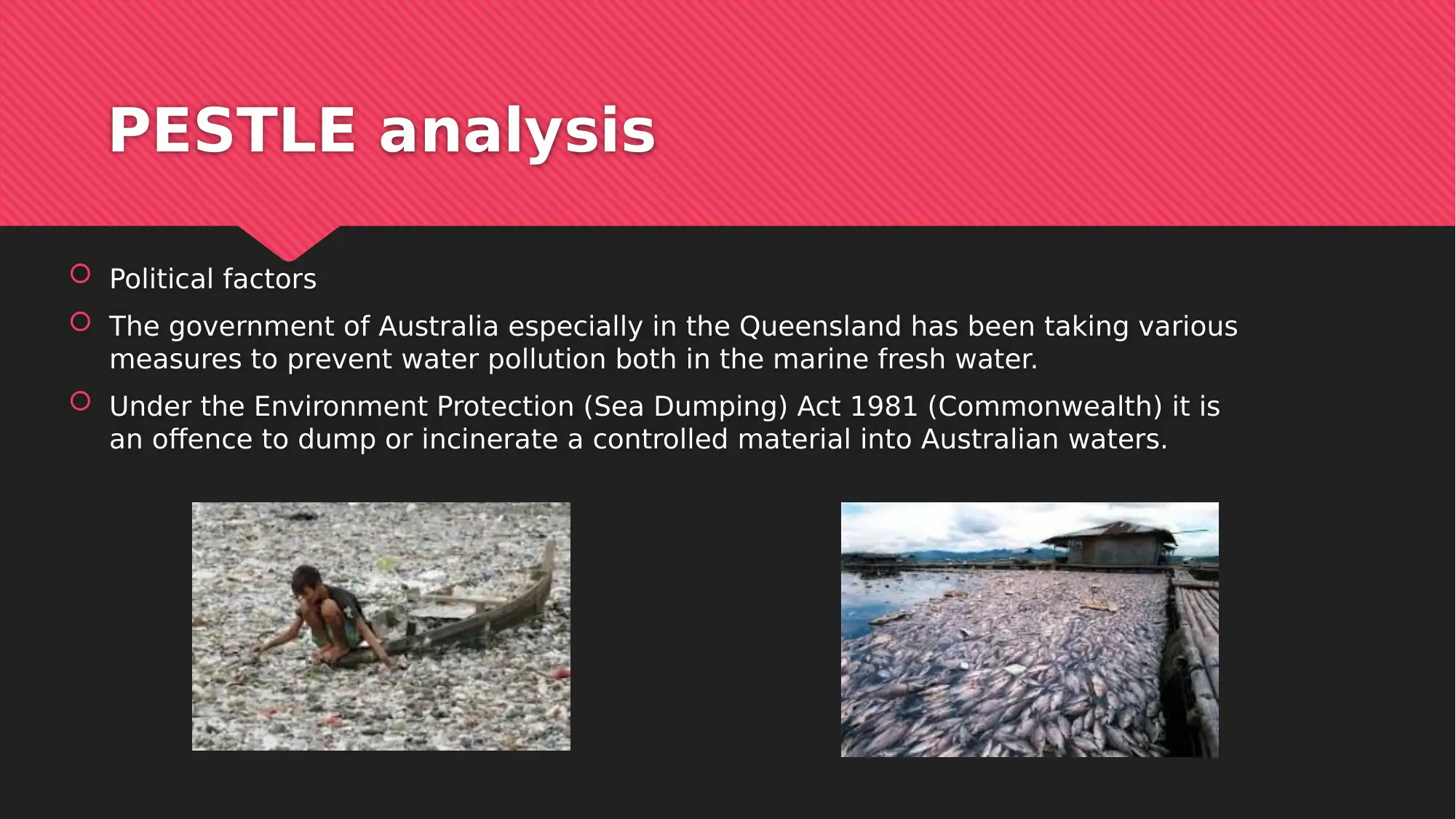
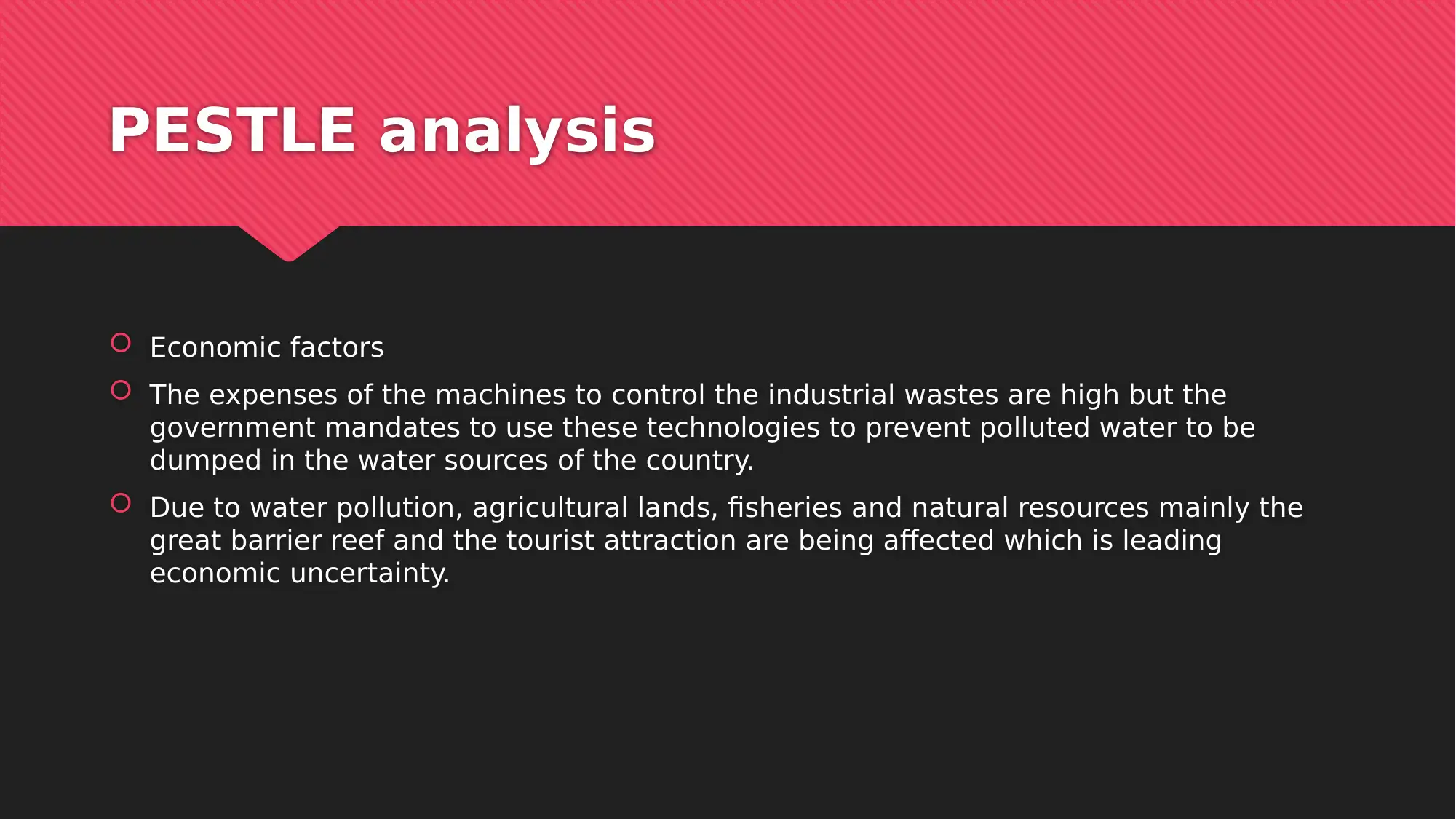
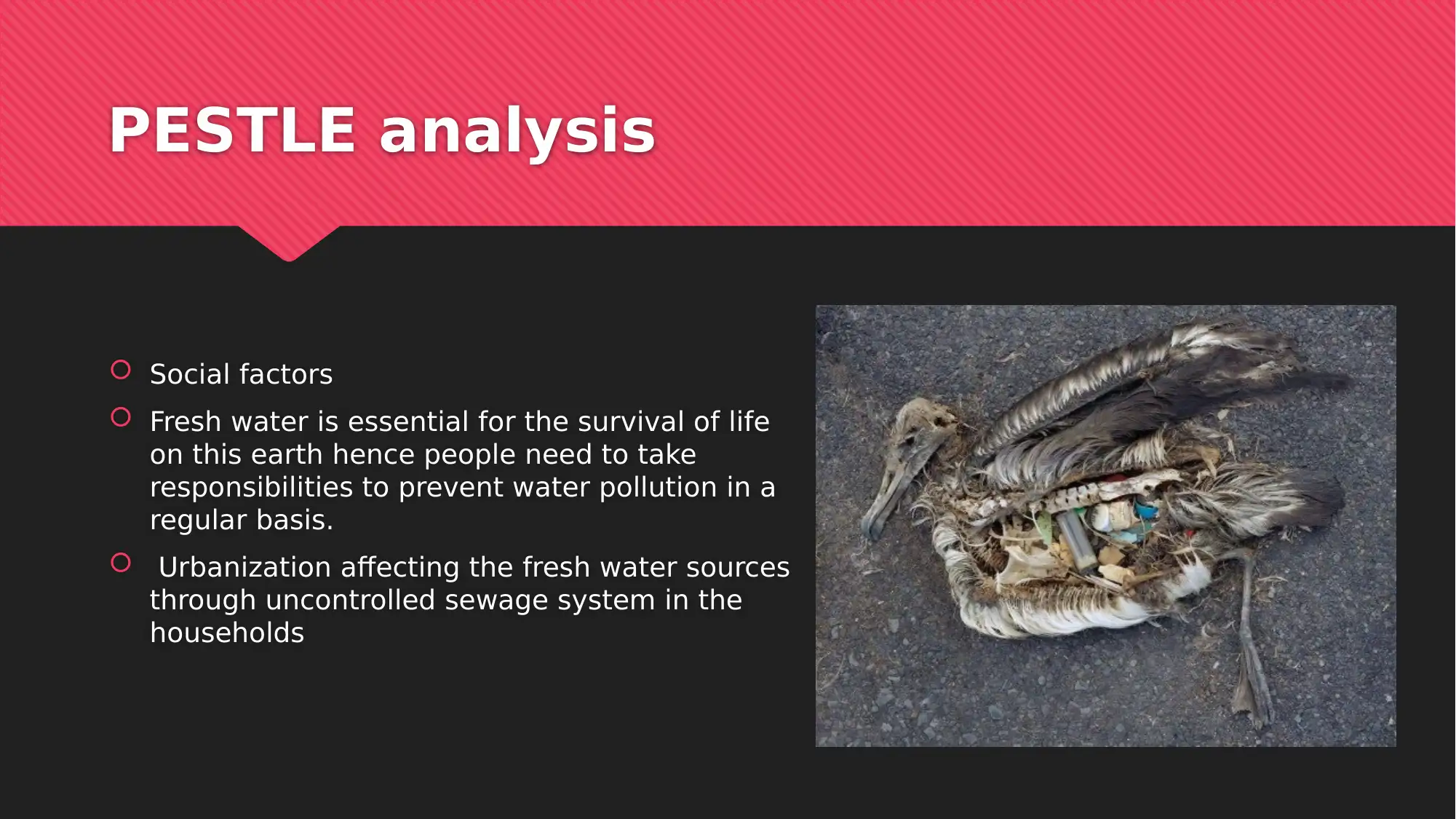
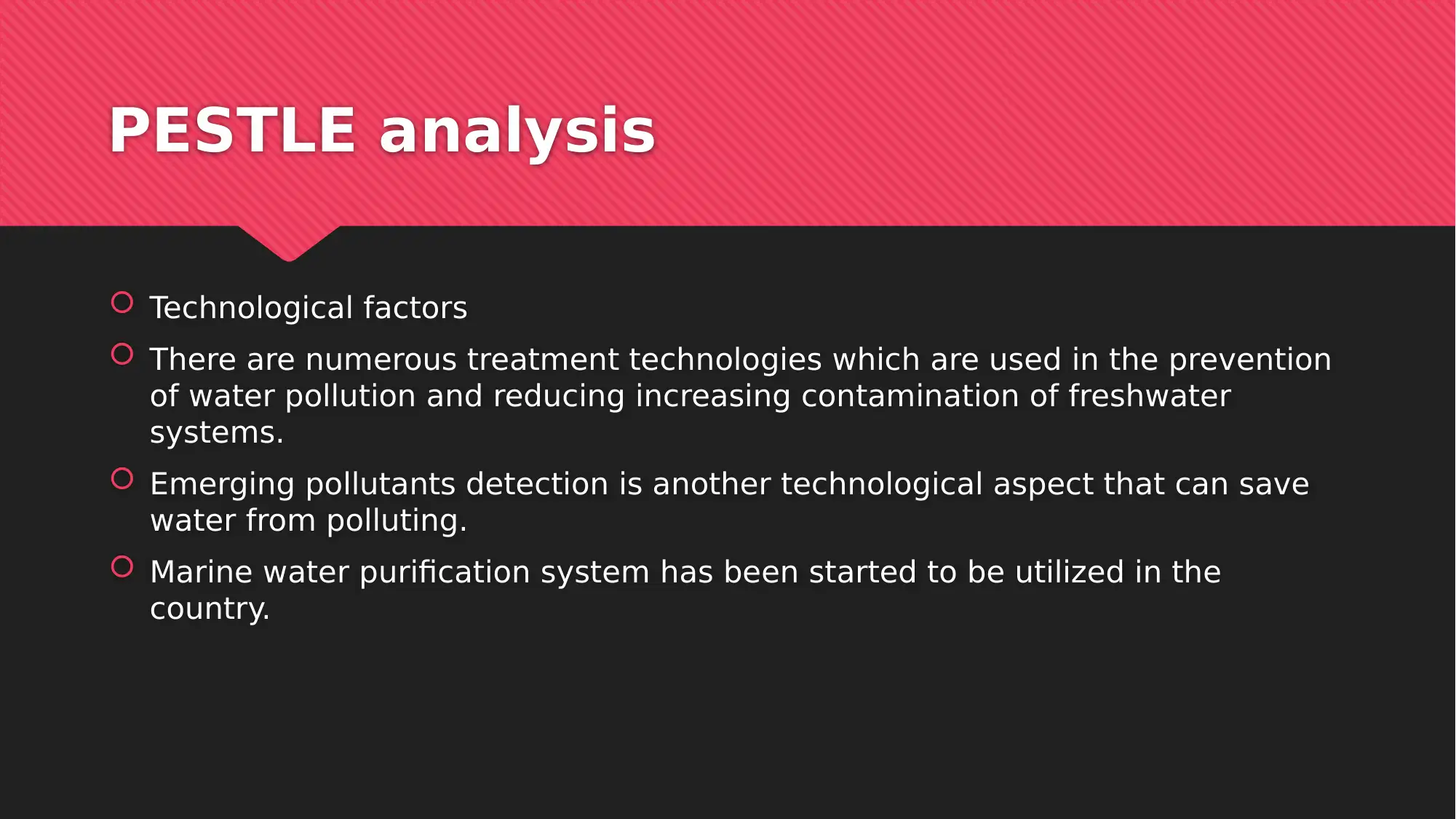
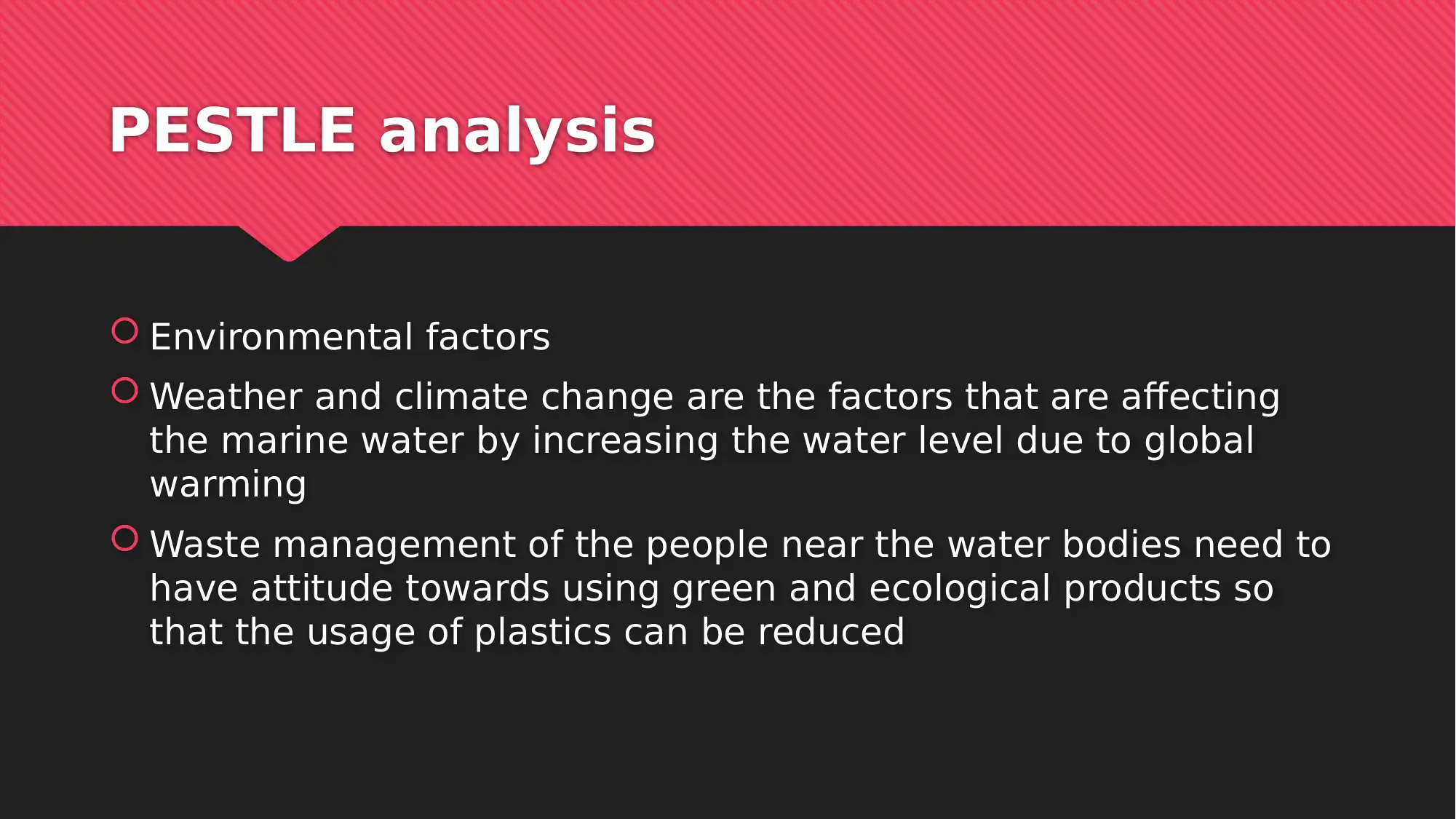






![[object Object]](/_next/static/media/star-bottom.7253800d.svg)